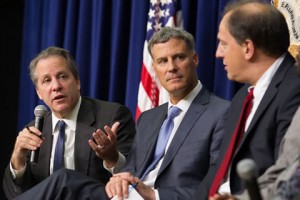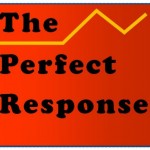
Humans are all about the business of adding and subtracting to whatever the facts on the ground may be.
Mediators and counselors spend a lot of time working with individuals who are struggling to find common ground. These sessions could be as formal as talks between labor and management representatives trying to forge a new workplace agreement. Or they can be significantly less structured, as in a typical impasse in couple’s therapy, where memories about recent disagreements are different probably producing more heat than light.
It is part of our nature to see things and understand even simple events in unique ways. We may live in the age of the perfect digital copy. As we have noted, humans, by contrast, are all about the business of adding and subtracting to whatever the facts on the ground may be.
A favorite teacher once explained it this way. Imagine two people are hiking along opposite sides of the same valley. They are perhaps a mile or two apart, separating by the valley floor and its varied geography. If we stop them at the same time and ask for a report of what they see, they will describe essentially different valleys. Their foreground views of particular features provide unique impressions about the landscape. So while both are “right” in their own ways, there are clearly variances in their reports.
Such perspective-based observation is simply built into our unique operating system. Perception is a mix of observation and imagination. And though this built-in variability creates all kinds of problems in life, we probably wouldn’t want it any other way. Perspective is what makes us who we are.
Even so, it can be useful to work out disruptive differences of understanding in a process known as mirroring. It’s a simple method where the facilitator or mediator asks one side in a dispute to first restate what the other side has said, to the other’s satisfaction. This summary must be accepted by the other side before he or she can move on and state their own views. In couple’s counseling mirroring may take the form of a therapist asking John to restate what he think he heard in Mary’s last remark. The therapist reminds him to not interpret the remark, but simply restate it as accurately as possible. True to form, John makes the effort, but perhaps not quite to Mary’s satisfaction (Mary: “You’re still not hearing what I’m saying”). So he tries again, probably getting closer in registering her feelings or complaints.
The process stops a common and destructive pattern called “bypassing,” which is the term of choice for “listening” that is really just waiting for a turn to speak. And while mirroring has the disadvantage of slowing down the natural flow of conversation to a measured crawl, its advantage is that it forces each side into acknowledgement of the other. The payoff is clearer understanding and maybe genuine empathy. To restate another’s view’s accurately gets a person a little closer to the elusive goal of full understanding.
This process does not necessarily require a moderator. We know we are on the right track when we hear something like “Let me see if I can paraphrase what I think you are saying.” But a third person can often help.
Try this sometime when you need to step in to the mediator role. Helping others to actually grapple with raw feelings is a useful service we sometimes must provide to friends or coworkers.

